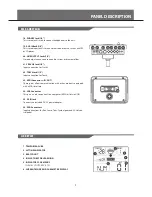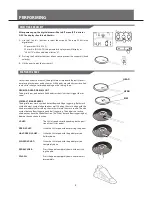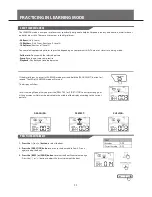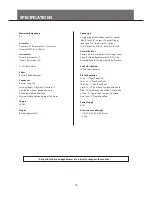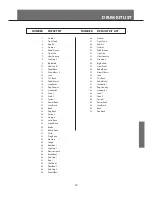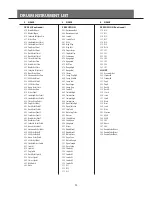
MAKING THE SETTING FOR PADS
ADJUSTING THE PAD SENSITIVITY
SETTING THE PAD THRESHOLD
ELIMINATING CROSSTALK BETWEEN PADS
SELECTING THE PAD CURVE
Press the [PAGE] or [UTILITY] button, select Pad Sensitivity page.
The
display will show:
Changes how a pad responds to your playing. At higher sensitivities, the pad
will generate a louder signal, even when you play softly. At lower sensitivities,
the pad will generate a quieter signal, even if you play strongly. Adjust accord-
ing to your playing style and desired dynamic range.
Press the [PAGE] or [UTILITY] button, select Pad Threshold page.
The
display will show:
Changes how forcefully you must strike the pad to generate a trigger signal.
Setting a high threshold requires hitting the pad very hard to get a sound.
This can help cut out transient responses, such as vibrations from the kit or
accidental pad taps that you don’t intend to generate sounds. Setting a low
threshold means even light touches will produce sound. Adjust according to
environment and playing style.
Press the [PAGE] or [UTILITY] button, select Pad Crosstalk page.
The
display will show:
When two pads are mounted close to each other, hitting one pad may
trigger the sound from another pad unintentionally. This effect can be
eliminated by setting this parameter to a higher value on the pad that is
triggered unintentionally.
Press the [PAGE] or [UTILITY] button, select Pad Curve page.
The display
will show:
Curve refers to how the trigger signal’s dynamic response relates to your
pad hit.
Curve1:
The standard setting, this produces the most natural correspon-
dence between playing dynamics and volume change.
Curve2, 3:
Compared to Curve1, strong dynamics produce a greater
change.
HINT:
If the value is set too high, then when two pads are
played simultaneously, the one that is struck less force-
fully will not sound. So be careful and set this parameter
to the minimum value required to prevent such crosstalk.
17



